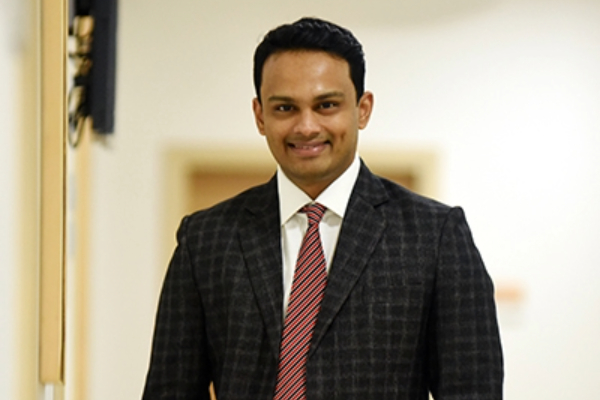DHI Hair Transplant
DHI, or Direct Hair Implantation, is a modified version of the FUE hair transplant technique. As the name suggests, this technique involves extracting the hair follicle and re-implanting it into the scalp directly by using a specialized implanter pen called a CHOI implanter.
The implanter pen has the special feature of pushing the hair follicles deep inside so that they are transplanted under the scalp precisely. This technique allows the hair follicle to stay inside the scalp and take root properly. This procedure is more advanced than other techniques of hair transplantation and helps obtain successful results.
What Makes A Candidate Suitable for DHI Procedure?
Mostly, patients with androgenic alopecia are the ones who are the best candidate for hair transplant treatment. The following characteristics of the patient make them a good candidate for hair transplant-
- Age- The patient must be above 25 years of age, as hair loss before this age is usually progressive and unpredictable.
- Hair Diameter- Patients with thicker hair are usually better candidates for the treatment. It is because thicker hair gives more coverage to each hair follicle.
- Donor Hair Density- The patient who wishes to get a hair transplant must have a hair density of more than 40 follicles per square centimeter at the donor site. If the density is lower than the specified range, the patient is considered ineligible for hair transplants.
- Hair Color- People who have lighter hair color or a color that is close to their skin tone often achieve the best results with a hair transplant operation.
- Expectations- The patient must have realistic expectations from the procedure. If the patient doesn’t have realistic expectations, he/she is less likely to be satisfied with the results.
What Happens During Direct Hair Implantation (DHI)?
The procedure of direct hair implantation takes place in 3 phases- Extraction Phase, Placement Phase, & Growth Phase.
- Extraction Phase– This involves extracting the hair follicles from the roots one by one with a specially designed disposable tool with a diameter of 1 mm or less. Then the follicles are kept at a specific temperature in a solution that enhances their growth abilities.
- Placement Phase – After the extraction process is complete, the hair follicles are taken and directly implanted into the recipient area using a CHOI implanter pen. There is no need to create punch holes or slits before the follicle implantation during this technique.
- Growth Phase – As the surgeon has full control over the depth, direction, and angle of placement of each graft, the hairs are less likely to fall out from the scalp. More than 90% of the implanted follicles take root in the scalp, and hairs start to grow from them naturally.
The steps involved are explained below-
- The donor and recipient areas are numbed using local anesthesia.
- A specialist tool is used to remove the hair follicles one by one.
- Then the hair follicles are placed into a special tool called the CHOI needle, which is used for the implantation.
- Each hair follicle is individually implanted in the scalp at an angle of 40-45 degrees.
Typically, 2 to 6 CHOI implanter pens are used concurrently during the procedure. They come in a variety of sizes to fit single, double, triple, and quadruple follicular grafts.
How to Prepare for DHI Hair Transplant?
Once the doctor determines that the patient is a good candidate for a DHI hair transplant, he/she will recommend some necessary blood tests to ensure that the patient is healthy. Along with the blood test, the doctor will also analyze the donor site.
For preparation, the doctor and his/her team will give you the following instructions-
- Take a break from using anticoagulant medications before hair transplant surgery.
- Stop consuming alcohol and smoking a few days before the procedure.
- The doctor will gather information regarding the patient’s allergies, chronic diseases, and regular intake of medications.
- It is important to avoid dying or getting any type of chemical treatment before the hair transplant operation.
- If there is eczema or any other skin disease on the scalp, it should be treated before the treatment.
In the planning for a DHI hair transplant, the doctor will also determine the following-
- The number of grafts that needs to be collected from the donor area to provide desired results.
- The natural growth direction and the angle at which the hair follicles need to be transplanted.
- The natural hairline of the patient needs to be restored.
Potential Side Effects of DHI Hair Transplant
Hair transplantation surgeries are usually safe and rarely have complications. As DHI is a less-invasive method, the chances of the patient developing serious complications further decrease.
However, there are some potential side effects the patients may experience. These side effects include-
- Reaction to Anesthesia- The patient may have some temporary side effects, such as dizziness, headaches, blurred vision, etc., due to local anesthesia.
- Infection- The patient can develop an infection at the donor or recipient site. Serious infections are rare and occur in only about 1% of cases.
- Shock Hair Loss- This usually happens within 2 months of getting a hair transplant. Instead of being a side effect, it is usually considered part of the hair growth cycle.
- Undesired Appearance- The implanted hair follicles might not align with the natural angle of the hair growth. If so, the results may not be pleasing to the patient.
Other than the above-mentioned side effects, some other complications may also arise, such as-
- Bleeding in the scalp
- Pain in the scalp
- Hair follicle inflammation
- Scarring
What to Expect After DHI Hair Transplant?
Immediately after the hair transplant, the patient will feel soreness, mild/moderate pain, discomfort, and tightness in the scalp. Both the donor and recipient areas will be bruised.
The patient will be prescribed pain medications to manage the discomfort. Detailed instructions are also given to the patient for post-op care to reduce the chances of complications.
DHI Hair Transplant Results & Recovery
The results of a DHI hair transplant will take around one year to appear clearly. The recovery from the procedure will take around 1-2 weeks. The recovery timeline is as below-
- Within 4-5 days, scabs will start to form over the implanted follicles. The scab formation signifies that the wound is healing properly.
- In the next 10 to 15 days, the scabs will fall off on their own. This is the most sensitive period of healing. Once the scabs fall off, it means that the follicles have taken root in the scalp.
- The hair growth cycle starts within 1 to 3 months. As the follicles extracted are usually in different growth phases, the growth may be inconsistent in the early recovery period.
- In 1-3 months, the patient may also experience shock loss, in which the implanted hair will fall off. This is completely natural, and the patient doesn’t need to worry about it.
- In the next 3 to 6 months, new hair growth will take place, and the results of the DHI hair transplant will become visible.
- After 8 months to 1 year, the hair will be denser and voluminous.
Benefits of DHI Technique for Hair Transplant
DHI is very similar to the FUE hair transplant technique. Hence, the benefits are also very similar to the procedure. The key benefits of the DHI hair transplant technique include the following-
- The follicles that are transplanted into the scalp stay out of the scalp for a very short period. Thus, the follicles are healthier.
- The follicle survival rate is very good. Around 90% of the follicles implanted survive after implantation.
- Due to direct implantation of the hair follicles, the skin puncture is minimal. Thus, the procedure leads to minimal bleeding.
- The procedure is carried out in a quick and safe manner.
- The results are much better than other techniques of hair transplantation.
DHI Hair Transplant Cost in India
The DHI Hair Transplant Cost ranges from Rs.60000 to Rs.1,80,0000. The cost varies for each patient depending on various factors, such as-
- The surgeon’s fee
- Anesthesia fee
- Hospital-related expenses
- Diagnostic tests, if any
- Number of hair grafts that need to be used
- Graft quality







